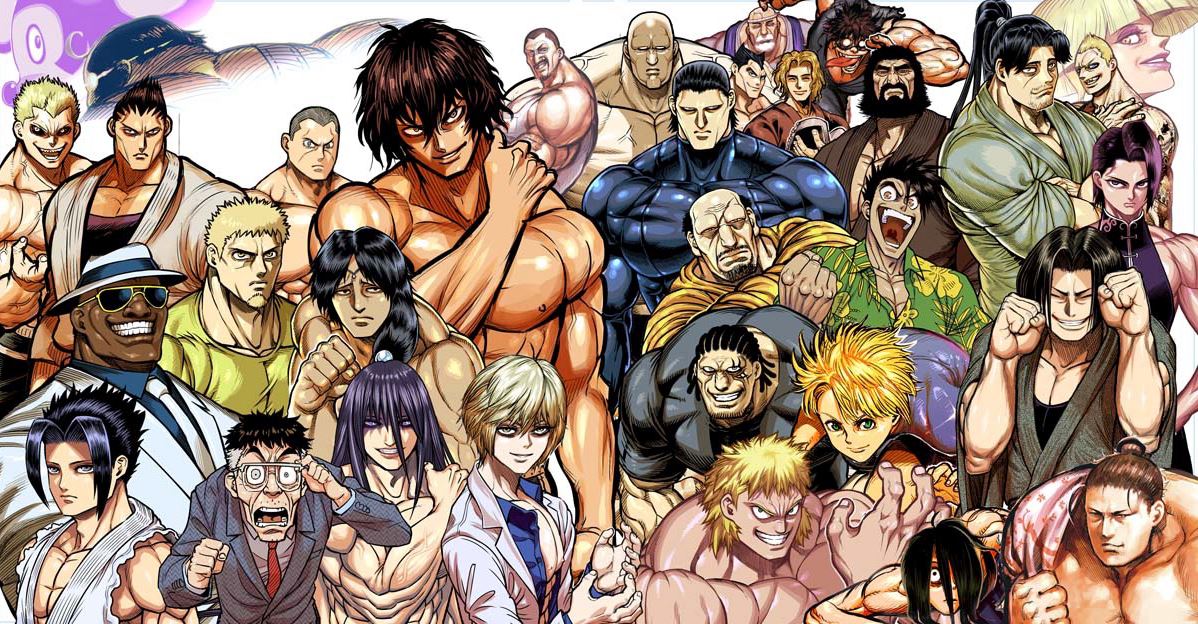
Many highly popular series use “ensemble writing,” since so many fall under the umbrella of having an ensemble cast. The Anilist tag boasts such heavy-hitters as: Hunter x Hunter, My Hero Academia, Attack on Titan, Full Metal Alchemist, Steins;Gate, Gintama, Haikyuu!!, and that’s just the first few rows. It’s clear that people like media with plenty of people in it. However, no one would ever suggest all of those series in the tag read anything like one another. So how can we distinguish within the category?
There are many clever formations to ensemble writing. When misused, they can push the writing into being unbearable and indecipherable. When used well, they lift stories into the sublime. Let’s give them some shape, in the tradition of Emergent Strategy and Meander, Spiral, Explode. Use these as thinking tools. I don’t expect my definitions to be airtight under scrutiny.
The Bike Chain (Plot-First Approach)
This strategy starts by introducing an enclosed period of time. We follow one character or small group for as many scenes or chapters as it takes for them to complete their purpose in their story unit, then switch to the next, and repeat until we’re in the present. In sum, think of how a bicycle’s gears work. A segment of a bike chain will hook into the same part of the gear until it passes it.
- Examples
- Jujutsu Kaisen‘s Colony Arcs;
- Sakamoto Days;
- Bleach, specifically during the battle sequences.
- Potential Strengths
- Laser-focus on action, choreography, and tactics;
- Opens the window for clear development of one character at a time;
- Room to tackle complex scenarios and highlight relationship chemistry.
- Potential Weaknesses
- Long periods of time between seeing characters;
- Risks audience forgetting plot points as other events supplant their attention (especially if the story is complicated like, say, World Trigger);
- Could drag the pace down if it gets too detail-oriented.
The Flock (Cast-First Approach)
The action involves all present characters at once. The point of view can fluidly transfer within the scene. This video of a murmuration of starlings is a great demonstration. The instinct of any one bird might cause a ripple in the shape of the full group.
- Examples
- Kaguya-sama: Love is War;
- Haikyuu!!;
- One Piece (less and less successfully, in my opinion).
- Potential Strengths
- Enables equally-distributed character development;
- Full exploration of all characters’ inner psychology;
- Elevates supporting characters to a relatable, human standard.
- Potential Weaknesses
- Without a solid grip on the characters, there won’t be enough material for all to participate to the same degree. Some might fall to the wayside and come off as shallow;
- The more characters there are, the less time is spent with each. Not strictly a downside, it just depends on what the story prioritizes.
The Frayed Rope (World-First Approach)
With this strategy the story consists of interactions between independent parties of characters. The main story events almost always occur at those crossroads. The narrative weaves at-will between side events specific to one or two characters, and main events with most of the cast. Imparts a zoomed out feeling.
- Examples
- Dorohedoro;
- Kengan Ashura;
- Hunter x Hunter.
- Potential Strengths
- Massive space for story variance and unpredictability;
- Ability to improvise chapter-by-chapter and introduce story breaks seamlessly;
- Backstory and exposition feels less clunky since tools like flashbacks can be framed to compliment the story flow rather than interrupt it.
- Potential Weaknesses
- Can very easily lose track of important plot points, characters, arcs, and get distracted by what’s shiny. This is a frustrating reader experience;
- Difficulty to wrap up into a satisfying ending without thorough planning;
- Requires a large number of raw ideas to sustain the story or else it can stagnate.
Many of the examples I listed above use more than one of these models depending on what the story requires. They are by no means exclusive. Soon, I intend to post a comparison between two series that I think write ensembles to opposing degrees of success.
What are some other examples you enjoy? Are there ensemble writing models I missed that you’ve seen elsewhere? Let me know in the comments below, or reach out directly.
